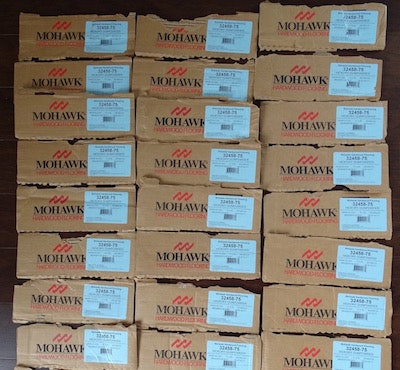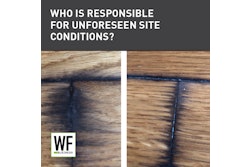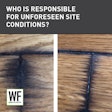
We live in a world where you are innocent until proven guilty by the court system … unless you’re in the wood flooring business! Flooring installers can feel that way when something goes wrong and now they are under the microscope of inspection. Under the rules of the courtroom, industry standards are what will prevail and, in many cases, the findings will be against the installer due to his production schedule and failure to comply with manufacturer and industry standards.
There are a few simple rules a flooring contractor/retailer/installer must follow to reduce their exposure of liability.
1. Read and follow all manufacturer and industry guidelines to the T.
If you deviate from the standard, you then will be held liable for not complying and held accountable for all damages. For example, if the butt ends are out of square and you installed the flooring anyway, you would be on the hook for board replacement at your expense. Like it or not, the guidelines state you, as the installer, are the final inspector of the product before installation.
2. Document every step.
This is critical in today’s day and age of liability. Create a worksheet that covers all facets of the project and documentation, including photos.
 This proactive installer saved all the box ends, laid them on the floor and took a photo to show all the flooring he installed came from the same run.
This proactive installer saved all the box ends, laid them on the floor and took a photo to show all the flooring he installed came from the same run.
Consistency is critical in our industry! Whether it’s stain, adhesive, finish or flooring, make sure all containers or boxes are from the same run/lot numbers. I have done inspections where the stain color or sheen was different due to mixing two different run numbers. Can you mix them? Sure you can, but if it doesn’t match 100 percent, you will be on the hook for it. The most common one I see is in tract homes—they have a couple boxes left over from the house next door and mix it in with the flooring for the next house. Just remember that rule about the installer being the final inspection…
4. Close out the job with the correct documents.
Closeout documents are critical. When we say “maintenance,” everybody thinks of cleaning and felt protectors, yet a critical aspect of maintenance—the manufacturer’s environmental requirements—rarely get to the buyer of the floor. Most floors don’t fail from over cleaning, but rather from improper environmental maintenance.
If you follow these few simple rules, you will be able to furnish the wood flooring inspector all your field notes and shift the legal liability from you to other parties involved, such as builder, designer or even homeowner.
This proactive installer saved all the box ends, laid them on the floor and took a photo to show all the flooring he installed came from the same run.

































